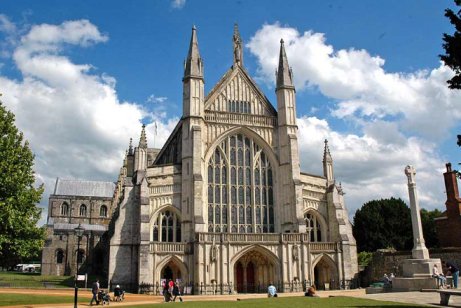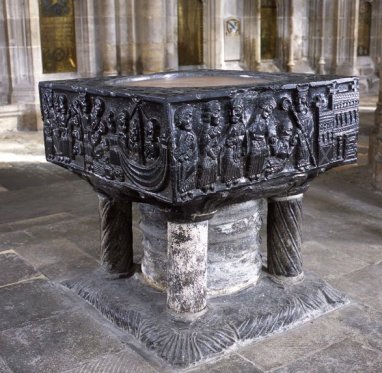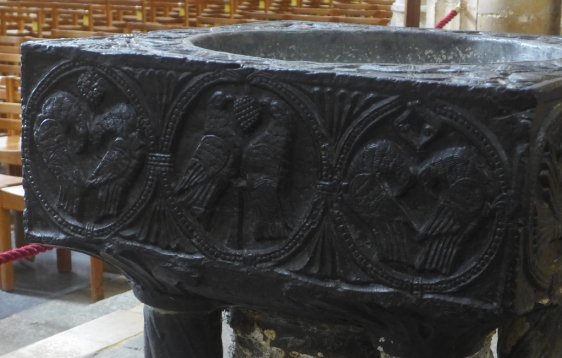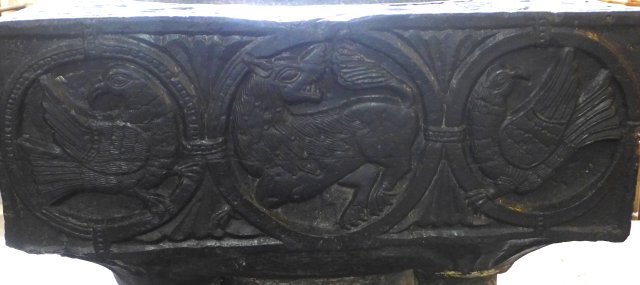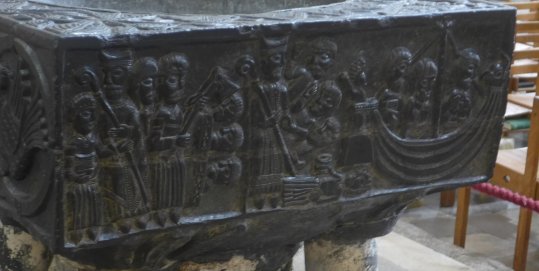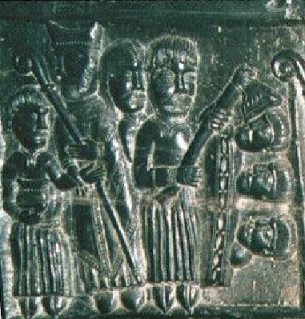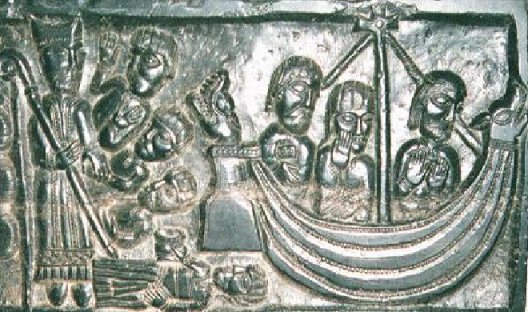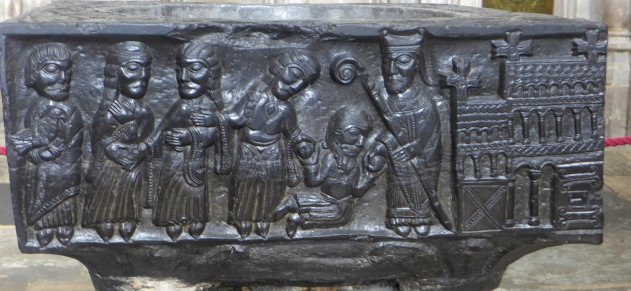|
Winchester Cathedral |
|
| The Winchester Cathedral website claims that this is the finest of the Hampshire fonts. Well, they would say that, but it's difficult to argue with it. Henri de Blois would, understandably, have kept the best one for his own cathedral. The main theme is the various legends of the miracles of St Nicholas, otherwise known as St Nicholas of Bari, otherwise known as Santa Claus. | |
|
|
|
|
East face Three pairs of doves. Doves are an ancient Christian symbol, representing both the Holy Spirit (as seen in Annunciation scenes) and human souls. |
|
|
|
|
| North
face A pair of doves flanking a fierce beast, probably a lion - it is quite similar to the lions in Southampton. |
|
|
|
|
| West
face The first of the stories of St. Nicholas. Here's where it gets a little more complicated. For saint's stories, I usually turn to the Golden Legend, but these fonts predate that by over a hundred years. The story on the left was not picked up by Voragine in any case; it is a children's legend still popular in France, where it forms the words of a popular (if gruesome) song. This ties in with the origin of the font. We see Nicholas with his bishop's crosier. On one side of him is a child. On the other side are a couple of figures, one with an axe. Three heads are stacked on the right. Three boys had arrived at a butcher's shop, and asked to be put up for the night. The butcher had other ideas - he chopped them up with the axe and placed them in a vat of brine, to prepare their meat for unsuspecting customers. When St Nicholas arrived at the butcher's, he asked if he could have one of the boys for dinner. The butcher confessed his sins, conscience-stricken (or alarmed that he had been found out.) At this point Nicholas brought the three boys back to life; the figure on the left is, presumably, one of them. The story on the right is in the Golden legend, and very involved it is too. A nobleman begs St Nicholas to pray for him for a son; if the prayer in answered, he will present St Nicholas with a golden chalice. The prayers work, and the nobleman has the chalice made, but he likes it rather too much and decides to keep it. He has a not-so-good chalice made for Nicholas. Father and son go on a voyage; there is a storm, and the son, along with the best chalice, are swept overboard. Filled with guilt, the nobleman takes the remaining chalice to St Nicholas, but every time it is placed on the altar it falls off. Cue the lost son, carrying the best chalice, who arrives and explains how he was rescued by St Nicholas. In the end, St Nicholas gets both of the chalices. I won't attempt to tie the events of the story in with the detail on the font! |
|
|
|
|
|
|
|
| South
face This is the best known story of St Nicholas, and was the origin of the 'Santa Claus' legend. St Nicholas, outside his church, is confronted by a kneeling man. He is too poor to provide a dowry for his three daughters, shown next to him, and a possible life of prostitution awaits them. St Nicholas hands the poor man a purse of money for the dowries. On the left a figure with a hawk represents a prospective husband, waiting for his share of the cash. The usual version of the story has St Nicholas secretly throwing purses of gold through the windows of the poor man's house. This may have proved just a little too difficult for the carver of the font. St Nicholas is the patron saint of children, so his stories, however apocryphal, are very appropriate for a font. |
|
|
|
|
